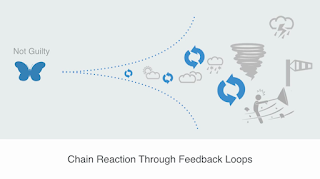The Tepsa Incident analysed by our algorithm -HSEQ Competency Testing
TankTerminalTraining perforned this test on behalf of our industries which I hope will convince you and team about the significance of VanCampen’s Law. We asked AI to analyse the risks of lacking information about HSEQ competencies of contractors.
This is the result:
If the operational risks of the marine storage industry when information about the HSEQ (Health, Safety, Environment, and Quality) competence of contractors is lacking, we can use *VanCampen's Law of Functionality*. The equation \((m - i) > r \ → \ ΔS > 0\) suggests that if the mass (m) minus information (i) exceeds reality (r), the system becomes dysfunctional, leading to increased entropy (disorder) and collateral damage. Below is a breakdown of function and the potential externalities.
#### *Core
Functionality:*
We will
assess the operational risks in the marine storage industry by evaluating the
gap between the *mass (m)* (e.g., scale of operations, number of contractors,
or complexity of projects), the *information (i)* (e.g., available data on HSEQ
competence of contractors), and the *reality (r)* (e.g., actual safety
standards, regulatory compliance, and operational conditions). If \((m - i)
> r\), flag the system as dysfunctional and project potential
risks.
1. *Data
Input Module:*
- *Mass (m):* Users input data on the scale
of operations (e.g., number of contractors, size of storage facilities, volume
of materials handled).
- *Information (i):* Users input available
data on the HSEQ competence of contractors (e.g., certifications, audit
reports, incident history).
- *Reality (r):* Users input real-world benchmarks (e.g., regulatory standards, industry best practices, historical performance data).
2. *Risk
Assessment Engine:*
- Calculates \((m - i)\) and compares it to
\(r\).
- If \((m - i) > r\), identifies the system as dysfunctional and projects potential risks (e.g., safety incidents, environmental damage, regulatory fines).
3. *Entropy
(ΔS) Projection:*
- Quantify
the potential increase in entropy (disorder) and collateral damage, such as:
- Safety incidents (e.g., accidents,
injuries, fatalities).
- Environmental damage (e.g., spills, pollution).
- Financial losses (e.g., fines, litigation costs, operational
downtime).
- Reputational damage (e.g., loss of trust from stakeholders).
4.
*Externalities Tracker:*
- Potential externalities (see below) and provides recommendations to mitigate risks.
5.
*Reporting and Alerts:*
- Generates detailed reports on operational
risks and sends alerts when \((m - i) > r\).
- Provides actionable recommendations to improve HSEQ competence and reduce risks.
### *Potential Externalities (Collateral Damage):*
1. *Safety
Risks:*
- Increased likelihood of accidents,
injuries, or fatalities due to inadequate HSEQ competence of contractors.
- Higher risk of equipment failure or operational errors.
2.
*Environmental Damage:*
- Oil spills, chemical leaks, or other forms
of pollution due to poor safety and environmental practices.
- Long-term ecological damage and cleanup costs.
3.
*Regulatory Non-Compliance:*
- Fines, penalties, or legal action due to
failure to meet HSEQ standards.
- Suspension or revocation of operating licenses.
4.
*Financial Losses:*
- Operational downtime due to accidents or
regulatory interventions.
- Increased insurance premiums or difficulty
in obtaining coverage.
- Litigation costs and compensation claims.
5.
*Reputational Damage:*
- Loss of trust from stakeholders, including
clients, investors, and the public.
- Negative media coverage and damage to brand reputation.
6. *Supply
Chain Disruptions:*
- Delays in operations due to safety
incidents or regulatory scrutiny.
- Loss of contracts or partnerships due to poor HSEQ performance.
7.
*Workforce Morale and Retention:*
- Decreased morale among employees due to
unsafe working conditions.
- Difficulty in attracting and retaining skilled workers.
###
*Functionality Projection:*
#### *Scenario 1: \((m - i) > r\) (Dysfunctional System)*
-
*Probability Dysfunctional:* High.
- *Entropy
(ΔS > 0):* Increased disorder and collateral damage.
-
*Projected Outcomes:*
- Safety incidents and environmental damage.
- Regulatory fines and financial losses.
- Reputational damage and supply chain disruptions.
####
*Scenario 2: \((m - i) \ ≥r\) (Functional System)*
-
*Probability Dysfunctional:* Low.
- *Entropy
(ΔS \ ≈ 0):* System remains stable with minimal
disorder.
-
*Projected Outcomes:*
- Compliance with HSEQ standards.
- Safe and efficient operations.
- Positive reputation and stakeholder trust.
### *Recommendations for Mitigation:*
1. *Improve
Information (i):*
- Conduct regular audits and assessments of
contractor HSEQ competence.
- Implement a centralized database for tracking contractor certifications and performance.
2. *Align
Mass (m) with Reality (r):*
- Scale operations based on available HSEQ
competence data.
- Avoid overextending operations without adequate safety measures.
3. *Enhance
Training and Awareness:*
- Provide HSEQ training for contractors and
employees.
- Promote a culture of safety and environmental responsibility.
4.
*Leverage Technology:*
- Use the law to monitor and predict risks
in real-time.
- Integrate IoT sensors and AI for proactive
risk management.
### *Conclusion:*
VanCampen's Law of Functionality analyses operational risks in the marine
storage industry when HSEQ competence data is lacking. By identifying scenarios
where \((m - i) > r\), it helps stakeholders anticipate and mitigate
potential risks, reducing entropy and collateral damage. This proactive
approach ensures safer, more efficient, and compliant operations in the marine
storage industry.
www.tankterminaltraining.com
![]()



Reacties
Een reactie posten